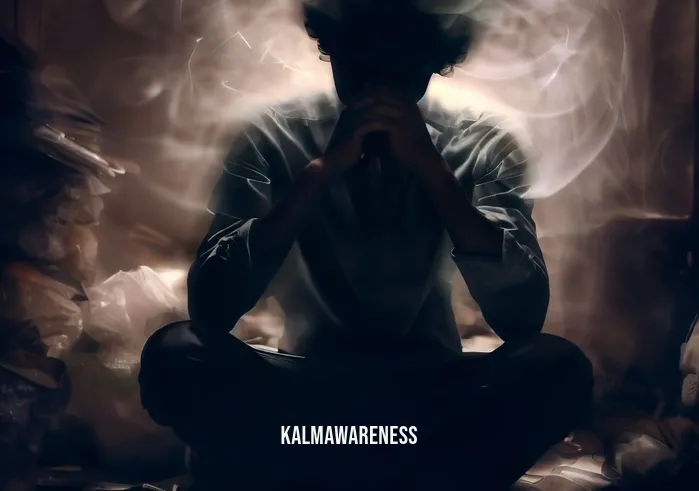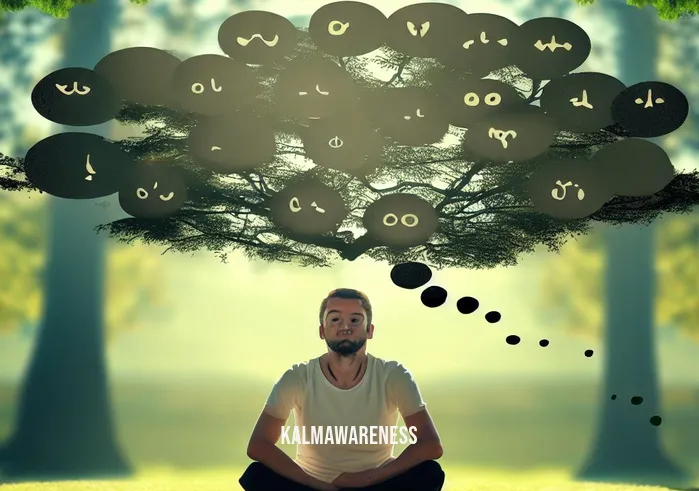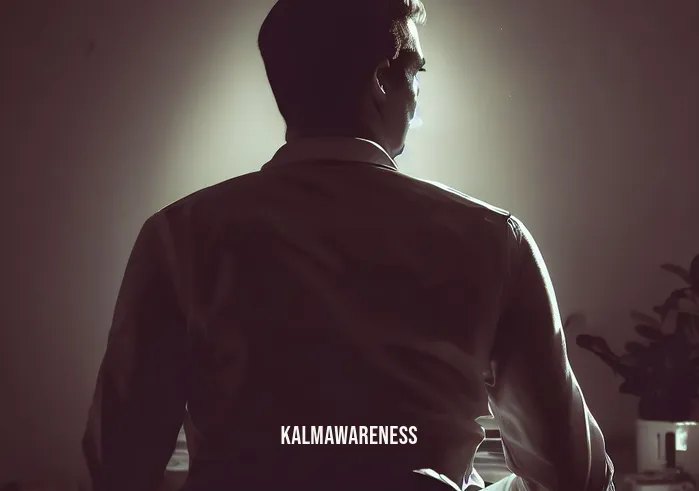Negative Thoughts Meditation: A Comprehensive Guide to Transforming Your Mind
The complexities of the human mind are both fascinating and challenging. Every day, our minds process a multitude of emotions, information, and experiences, some of which may lead to negative thoughts. However, in the realm of meditation and mindfulness, there are tools and techniques designed to help individuals navigate, understand, and transform these challenging thoughts. This guide dives deep into the concept of negative thoughts meditation and its correlation with various categories, such as Mindfulness, Cognitive, Visualization, Self-Talk, Gratitude, and the practices of Breathing and Meditation.
The Essence of Negative Thoughts Meditation
At its core, negative thoughts meditation involves recognizing, understanding, and shifting the patterns of the mind that often lead to detrimental or harmful thinking. When practiced regularly, this form of meditation fosters a deeper connection between the mind, body, and spirit, aiding individuals in creating a harmonious internal environment.
To understand the root causes and effects of negative thinking, it is crucial to first comprehend the intricate relationship between our thoughts, emotions, and behaviors. Many experts suggest that our thoughts significantly influence our feelings, which in turn impacts our actions. Recognizing this pattern is the first step towards altering it. Meditation allows us to slow down, observe our thoughts without judgment, and create a space to introduce positive change. The technique involves attaining a peaceful state of mind in which thoughts are not occupied by worry, fear, or anxiety.
Meditation offers various approaches to counter negative thoughts. For instance, mindful hypnobirthing emphasizes the importance of staying present, especially during significant life events. Another beneficial practice is mindful movement sleep, which aids in achieving restorative rest, essential for mental well-being.
The Role of Mindfulness
Mindfulness is a crucial element of negative thoughts meditation. It’s the practice of being fully present in the moment, without getting caught up in the swirl of past regrets or future anxieties. By anchoring our awareness in the present, we gain a clearer perspective of our thought patterns. Articles like mindfulness be happy now offer insights into how cultivating this practice can lead to genuine contentment and happiness.
Another essential aspect to consider is how our language and definitions shape our reality. Understanding phrases like keep in mind definition or discerning the nuances behind expressions such as pretty soon meaning can help in shaping a mindful and positive narrative.
Visualization and Self-Talk Techniques
Visualization is a potent tool, often considered an element of some meditation exercises. It involves creating positive mental images to replace negative thoughts. This technique, combined with constructive self-talk, can drastically change our internal narrative. For those beginning their meditation journey, resources like Jack Kornfield meditation for beginners provide a great starting point.
Gratitude and Its Power
Gratitude practices, such as maintaining a diary with one for each blessed day, can shift our focus from what’s lacking to what’s abundant in our lives. This shift in perspective is crucial in mitigating negative thoughts and fostering a sense of contentment.
Breathing and Meditation: The Twin Pillars
Both breathing exercises and meditation are intertwined in their capacity to promote mental clarity and tranquility. They serve as the foundation of negative thoughts meditation. By regulating our breath, such as in practices found in rouse yoga, we can achieve a calm mind, conducive to meditation. While many wonder, can u meditate lying down, the answer is yes. The posture is secondary to the intent and awareness one brings into the practice.
In conclusion, negative thoughts meditation is a comprehensive approach to understanding, managing, and transforming the negative patterns of our minds. By integrating techniques from various categories and practices, one can achieve a holistic well-being.
To further deepen your understanding of these techniques and their intricacies, continue reading the subsequent segments. We’ll explore the practices in more detail, delving into their history, benefits, and ways to incorporate them into daily life.

Advancing Your Journey: Techniques and Practices in Negative Thoughts Meditation
Negative thoughts meditation, often synonymous with cognitive mindfulness and reflective contemplation, plays a pivotal role in the realm of mental well-being. It goes beyond just focusing on the breath or observing the present moment. This chapter aims to delve deeper, offering readers an intricate understanding of various techniques associated with this meditative practice.
Advanced Techniques to Counter Negative Thoughts
The vastness of meditation offers an array of advanced techniques tailored to confront and transform negative thinking patterns:
Mirror Gazing: This technique, rooted in understanding the mirror gazing spiritual benefits, promotes self-awareness and introspection. It serves as a potent method to confront self-doubt and self-criticism, replacing these with love and acceptance.
Sustainable Self-Care: Engaging in sustainable self-care ensures consistent practices that reinforce positive thinking, effectively countering recurrent negative patterns.
Meditative Stability: Gaining insights on how to spell stabilize metaphorically in our meditation practices can lead to a stronger mental foundation, less susceptible to negative intrusions.
Teenage Walks: Drawing inspiration from the concept of teenagers walking, this method emphasizes the transformative journey from adolescence to adulthood, reminding practitioners of the potential for growth and evolution.
Deep Dive Meditations: Techniques explained in how we get deep so fast facilitate profound introspection, enabling individuals to swiftly uncover and address sources of negative thinking.
Guiding Principles in Negative Thoughts Meditation
To truly embrace the essence of negative thoughts meditation, understanding its guiding principles is crucial. These tenets lay the foundation for every technique:
- Awareness: Recognize and acknowledge the presence of negative thoughts without judgment.
- Acceptance: Understand that having negative thoughts is a natural aspect of the human experience.
- Transformation: Use meditative practices to transform these thoughts into positive affirmations.
- Consistency: Regular practice is the key to seeing lasting changes in one’s thought patterns.
- Patience: Remember that transformation is a journey, not a destination.
Comparative Analysis of Meditation Techniques
To assist readers in selecting the most suitable technique, below is a table offering a comparative overview:
| Technique | Primary Focus | Ideal For |
|---|---|---|
| Mirror Gazing | Self-awareness & Self-acceptance | Those with self-esteem issues or seeking self-realization |
| Sustainable Self-Care | Regular Positive Reinforcement | Individuals looking for consistent mental well-being |
| Meditative Stability | Strengthening Mental Foundation | Beginners in meditation or those with wavering concentration |
| Teenage Walks | Growth and Evolution | Adolescents or adults navigating major life changes |
| Deep Dive Meditations | Profound Introspection | Experienced meditators seeking deeper insights |
In conclusion, diving deeper into negative thoughts meditation reveals a world rich with techniques and practices. Each method offers unique benefits tailored to various needs and preferences. By understanding and adopting these advanced practices, one can efficiently navigate the maze of negative thinking, emerging with a clearer, more positive mindset.
In the next chapter, we will explore real-life success stories of individuals who transformed their lives using negative thoughts meditation. Their experiences will offer insights, inspiration, and actionable takeaways for readers eager to embark on or deepen their meditative journey. Continue reading to be inspired and enlightened.

Stories of Hope: Triumphs in Negative Thoughts Meditation
Life, with its myriad challenges, can sometimes steer us toward overwhelming negative thoughts. However, it’s in these moments that many find solace and transformation through negative thoughts meditation. This chapter celebrates the inspiring journeys of individuals who embraced cognitive mindfulness to reshape their mental landscapes. By learning from their experiences, we can gather invaluable lessons, reminding us that it’s never too late to begin our healing journey.
Transformative Tales of Hope
Anna’s Journey: Anna, a working professional, constantly battled self-doubt. She believed she was never “good enough” and felt trapped in a loop of negativity. It was through judgement of the wise practices in negative thoughts meditation that she found the wisdom to distinguish between constructive criticism and self-deprecating thoughts. Today, she stands tall, fueled by self-love and confidence.
Mark’s Revelation: Mark, a talented artist, faced frequent creative blocks, leading him to question his abilities. But it was his encounter with angel of prosperity meditation techniques that shifted his perspective. He learned to view challenges as opportunities and his blocks as moments of reflection. His art now resonates with this newfound positivity.
Sophia’s Awakening: Sophia, a stay-at-home mom, often felt overwhelmed with the daily demands of parenting. The constant rush left her drained, both physically and mentally. However, she found rejuvenation in meditation made simple. These straightforward practices helped her stay grounded amidst chaos, allowing her to cherish the beautiful moments of motherhood.
Resounding Quotes of Resilience
Throughout the history of mindfulness and meditation, many have eloquently captured the essence of the journey:
“In the middle of difficulty lies opportunity.” – Albert Einstein
- This quote reminds us that challenges are merely concealed opportunities, waiting to be uncovered.
“Every thought we think is creating our future.” – Louise Hay
- Emphasizing the power of our thoughts, this quote nudges us to cultivate a positive mindset.
“The thing about meditation is: You become more and more you.” – David Lynch
- A testament to self-discovery, this quote beautifully captures the essence of meditation.
“Mind is a flexible mirror, adjust it, to see a better world.” – Amit Ray
- Encouraging adaptability, this quote emphasizes the role of perception in shaping our realities.
The Ripple Effect of Positive Transformation
The journeys of Anna, Mark, and Sophia are not isolated instances. They reflect a larger community of individuals finding hope and transformation through negative thoughts meditation. Their stories, punctuated by challenges and triumphs, serve as a beacon of hope for many.
As touch that body part meditation emphasizes, every part of our being is interconnected. Positive transformations in our mind inevitably lead to positive changes in our lives. The ripple effect of this shift touches not only the practitioners but also those around them, creating a collective wave of positivity.
In conclusion, negative thoughts meditation offers more than just a temporary refuge from the storms of negativity. It provides tools and techniques to reshape and rejuvenate the mind, one positive thought at a time. Drawing inspiration from real-life stories and resonating quotes, we can find the motivation to embark on or continue this transformative journey.
In the next chapter, we will delve into the scientific underpinnings of negative thoughts meditation. Discover how modern science validates ancient wisdom, and learn about the tangible benefits this practice offers to our mind and body. Continue reading to bridge the gap between ancient practices and modern understanding.

Understanding the Mechanics: The Science Behind Negative Thoughts Meditation
Meditation, once viewed predominantly as a spiritual pursuit, has garnered significant attention from the scientific community in recent years. As research unfolds, it becomes increasingly evident that negative thoughts meditation is not just a practice but a science in itself. By breaking down its components, we can better appreciate the profound impact it has on our cognitive processes and overall well-being.
Key Components of Negative Thoughts Meditation
Cognitive Restructuring: This is the practice of identifying, challenging, and altering negative thought patterns. It forms the backbone of negative thoughts meditation.
Focused Attention: Concentrating on a single point of reference, like breath or a mantra, helps in decluttering the mind.
Awareness and Observation: Recognizing negative thoughts without engaging or judging them fosters mindfulness and clarity.
Positive Affirmations: Replacing harmful thoughts with positive affirmations reinforces a constructive mindset.
Regular Practice: Like any skill, the benefits of meditation amplify with consistent practice.
Scientifically Proven Benefits
Numerous studies have spotlighted the myriad benefits associated with negative thoughts meditation. Here’s a breakdown:
Neuroplasticity: Meditation promotes the brain’s ability to reorganize itself by forming new neural connections. This adaptability means that with practice, one can physically reshape their brain to better manage negativity.
Decreased Stress: Meditation regulates cortisol, the stress hormone, leading to a calmer disposition. This is especially beneficial for those feeling overwhelmed, as suggested by techniques in touch that body part meditation.
Improved Focus: As shown in studies referenced in meditation made simple, consistent meditators often showcase enhanced concentration levels.
Enhanced Emotional Health: Regular practitioners of negative thoughts meditation exhibit a more balanced emotional profile and reduced occurrences of mood disorders.
Greater Self-awareness: Delving into practices like mirror gazing spiritual benefits, meditation can amplify introspection and self-understanding.
Tackling Common Misconceptions
Given its increasing popularity, several misconceptions surround negative thoughts meditation. Let’s debunk some of them:
Only for the Spiritually Inclined: While it has spiritual roots, its benefits are universal, making it relevant for everyone.
Requires Hours of Dedication: As insights from how we get deep so fast suggest, even short sessions can be profoundly impactful.
Demands Perfect Silence: While a calm environment is beneficial, the essence lies in internal silence, not external.
Immediate Results Expected: It’s a journey of patience and persistence. Immediate results shouldn’t be the primary expectation.
Tips for Effective Practice
To harness the full potential of negative thoughts meditation, consider these tips:
Start Small: Aim for short, consistent sessions before gradually increasing the duration.
Designate a Quiet Corner: Having a dedicated meditation space can enhance focus and commitment.
Stay Open-minded: Embrace the process without rigid expectations.
Explore Different Techniques: From angel of prosperity methodologies to deep introspective practices, find what resonates best.
Seek Guidance: Consider expert resources, like Jack Kornfield meditation for beginners, for structured guidance.
In wrapping up this chapter, it’s clear that negative thoughts meditation is not just a conceptual idea; it’s a science-backed approach to holistic well-being. As we gear up for the concluding chapter, anticipate a holistic view, tying all the insights together, and offering a comprehensive approach to mastering negative thoughts meditation. Continue reading for a transformative conclusion.

The Horizon Ahead: Embracing the Power of Negative Thoughts Meditation
As we draw our journey to a close, it’s a moment of reflection, understanding, and renewed hope. The realm of negative thoughts meditation, or reflective mindfulness as some might call it, is vast, intricate, and transformative. Embarking on this expedition, we’ve unraveled its layers, from understanding its essence to witnessing real-life triumphs and decoding its scientific underpinning.
Gleaning Wisdom from Our Exploration
Let’s take a stroll down memory lane and revisit some key insights:
The transformative potential of techniques like Mirror Gazing and Sustainable Self-Care.
How cultivating mindfulness, as emphasized in resources like mindfulness be happy now, can lead to genuine contentment.
The power of quotes and stories of resilience, serving as beacons of hope and inspiration.
The scientific foundations, from promoting neuroplasticity to ensuring emotional well-being.
Tackling misconceptions and arming ourselves with effective practice tips, ensuring we’re on the right path.
Charting the Path Forward
Understanding is just the beginning. The real magic unfolds when we take proactive steps, integrating negative thoughts meditation into our daily routines. Be it through practices rooted in angel of prosperity methodologies or simple, mindful breathing, every step counts.
For those moments when challenges seem daunting or doubts creep in, remember to revisit the judgement of the wise practices, fostering clarity and wisdom. And if ever in need of a deeper dive, how we get deep so fast stands ready to guide.
An Inviting Call to Action
While we’ve delved deep into negative thoughts meditation in this series, the world of mindfulness and meditation is immense. I invite you to continue exploring, perhaps diving into other enriching topics available in our magazine. Remember, every article, every guide, is a step towards holistic well-being.
If any chapter or concept seems fuzzy or you’re eager to revisit, don’t hesitate. Go back, read, and re-read. Every repetition is an opportunity for deeper understanding.
Parting Words
To our cherished readers, thank you for accompanying us on this enlightening journey. Your quest for knowledge and self-improvement is commendable. Rest assured, our commitment to providing insightful content remains unwavering. We eagerly anticipate accompanying you on more journeys ahead.
In the vast ocean of life, with its ebbs and flows, let negative thoughts meditation be your anchor, grounding you in clarity, positivity, and hope. Here’s to brighter horizons and tranquil seas ahead!




